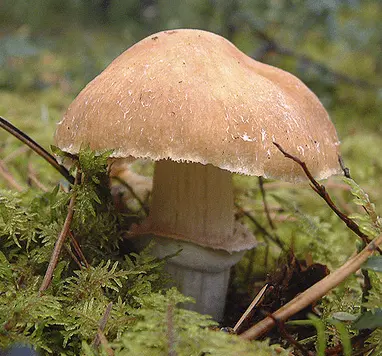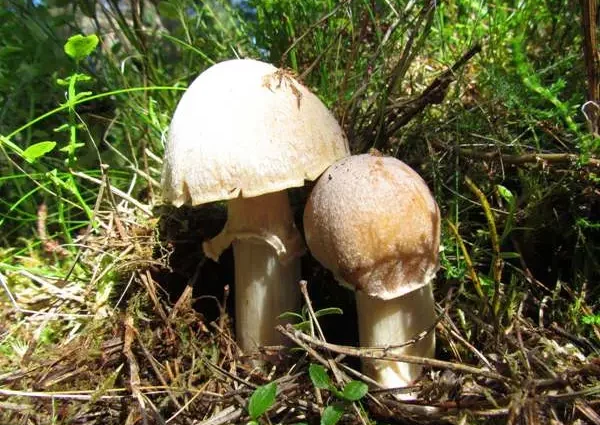Ringed cap (The curtain was taken)
- Division: Basidiomycota (Basidiomycetes)
- Subdivision: Agaricomycotina (Agaricomycetes)
- Class: Agaricomycetes (Agaricomycetes)
- Subclass: Agaricomycetidae (Agaricomycetes)
- Order: Agaricales (Agaric or Lamellar)
- Family: Cortinariaceae (Spiderwebs)
- Genus: Cortinarius (Spiderweb)
- Type: Cortinarius caperatus (Ringed cap)
- bog
- Chicken mushroom
- Turk mushroom
 Spread:
Spread:
The ringed cap is a species typical primarily for forests on the mountains and in the foothills. In mountain coniferous forests on acidic soils, it grows most often from August to October. It is collected, as a rule, next to blueberries, low birch, less often – in deciduous forests, under beech. Apparently, it forms mycorrhiza with these rocks. This mushroom grows in Europe, North America and Japan. It is found in the north, in Greenland and Lapland, and in the mountains at an altitude of 2 meters above sea level.
Description:
The ringed cap is very similar to cobwebs and was previously considered one of them. Its rusty-brown spore powder and almond-shaped warty spores are the same as those of cobwebs. However, a ringed cap never has a cobweb veil (cortina) between the stem and the edge of the cap, but there is always only a membranous membrane, which, when torn, leaves a real ring on the stem. At the bottom of the ring there is still an inconspicuous filmy remnant of the veil, the so-called hood (osgea).
The annular cap is somewhat similar (mainly in the color of its fruiting bodies) to some species of voles (Agrocybe). First of all, these are the hard vole (A. dura) and the early vole (A. praecox). Both species are edible, they grow profusely in spring, sometimes in summer, most often in meadows, and not in the forest, on garden lawns, etc. Their fruiting bodies are smaller than those of the annular cap, the hat is thin, fleshy, the leg is thin , fibrous, hollow inside. The early vole has a bitter floury taste and a floury smell.
Young mushrooms have a bluish tint and a waxy, later bald surface. In dry weather, the surface of the cap cracks or wrinkles. The plates are attached or free, sagging, with a somewhat serrated edge, whitish at first, then clay-yellow. Leg measuring 5-10/1-2 cm, off-white, with a whitish membranous ring. The pulp is white, does not change color. The taste of mushroom, the smell is pleasant, spicy. Spore powder is rusty brown. Spores are ocher-yellow.
The annular cap has a cap 4-10 cm in diameter, in young mushrooms it is ovoid or spherical, then flatly spread, in color from clay-yellow to ocher.
Note:










